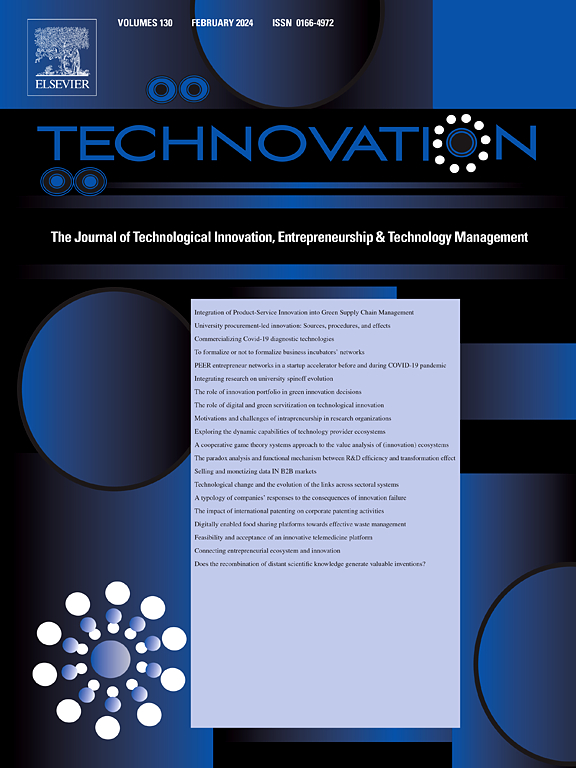Ecosystem framing and infomediary resonance: Amazon’s early years (1995–2003)
IF 11.1
1区 管理学
Q1 ENGINEERING, INDUSTRIAL
引用次数: 0
Abstract
Existing research into entrepreneurial framing has investigated how entrepreneurs use leadership, abstraction and familiarity emphasis in their framing to build legitimacy. However, how the media and financial analysts resonate with such framing is not known. Media and financial analysts are important information intermediaries that evaluate ecosystems and their orchestrators, as they are expert monitors offering consolidated assessments. Accordingly, we examine how the media and financial analysts resonate with the framing of a novel value proposition through an in-depth longitudinal case study of Amazon's early years. We found that Amazon differentially deployed leadership, abstraction, and familiarity framing between 1995 and 2003, decreasing leadership and increasing abstraction emphasis over time, while keeping familiarity constant. Information intermediaries resonated differently with framing: financial analysts focused more on the projective growth possibilities of the emerging ecosystem and its orchestrator, and the media focused more on real-world implications of the novel value proposition. We contribute insights about the process of entrepreneurial framing in emerging ecosystem contexts and highlight the various trade-offs that ecosystem orchestrators face when seeking resonance with the media and financial analysts. We also offer methodological suggestions for research on framing resonance that leverages linguistic analysis techniques.
求助全文
约1分钟内获得全文
求助全文
来源期刊

Technovation
管理科学-工程:工业
CiteScore
15.10
自引率
11.20%
发文量
208
审稿时长
91 days
期刊介绍:
The interdisciplinary journal Technovation covers various aspects of technological innovation, exploring processes, products, and social impacts. It examines innovation in both process and product realms, including social innovations like regulatory frameworks and non-economic benefits. Topics range from emerging trends and capital for development to managing technology-intensive ventures and innovation in organizations of different sizes. It also discusses organizational structures, investment strategies for science and technology enterprises, and the roles of technological innovators. Additionally, it addresses technology transfer between developing countries and innovation across enterprise, political, and economic systems.
 求助内容:
求助内容: 应助结果提醒方式:
应助结果提醒方式:


